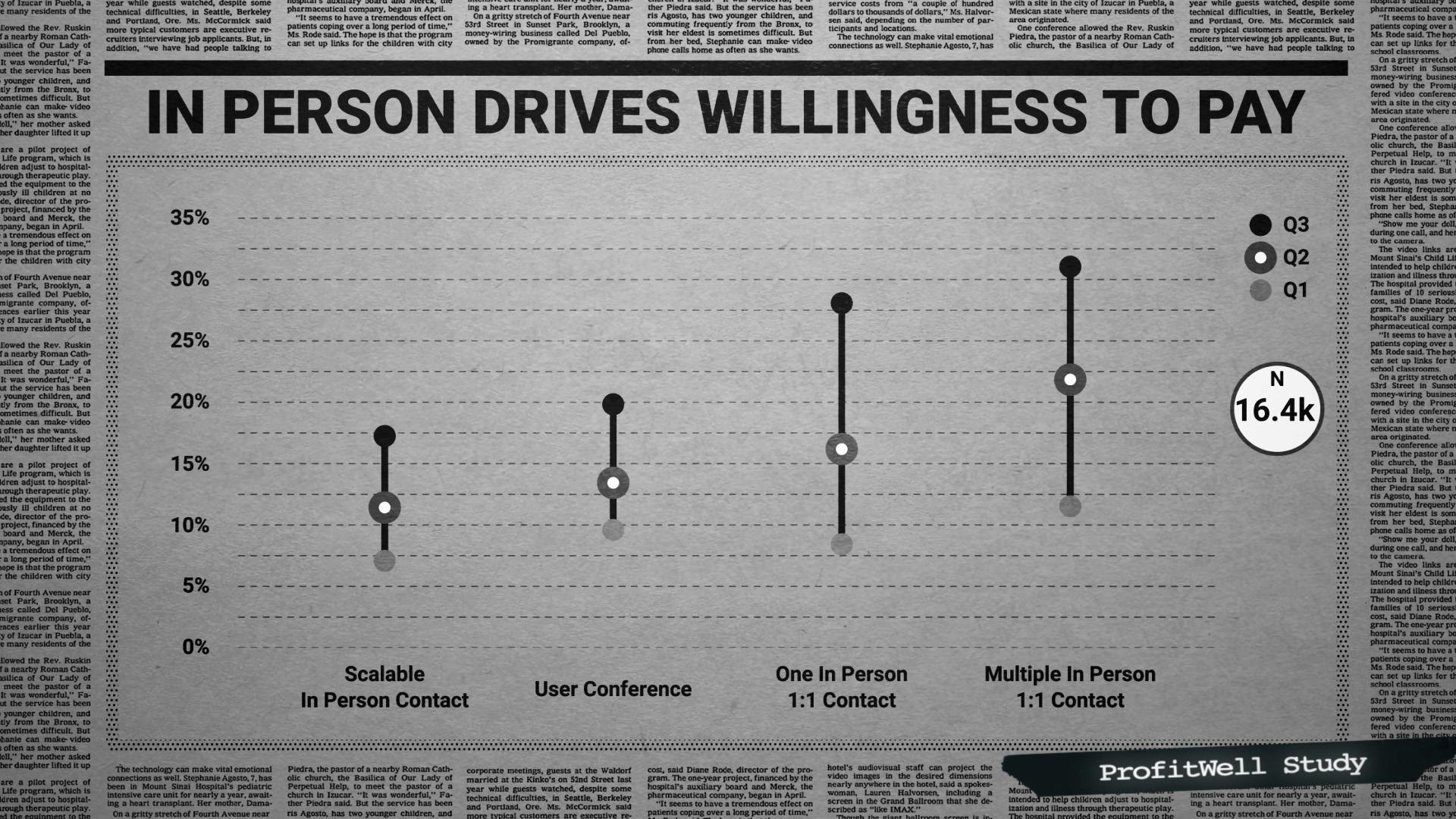
How Shopify changed commerce
Selling an item is relatively easy. Whether it’s old clothing, a bicycle, or even baked goods, someone is usually looking for it. You don’t have to have an established relationship with them, these can be folks you’ve never met. Sure, you may not make mountains of profit, but in little to no time I’m sure you can hock your old stuff.
But, what do you do if your ambitions are larger than bake sales and junk removal? What if you want to start an actual business? You could open a brick and mortar, but then you’ve got property to manage and a lot more overhead costs. You can use websites like eBay or craigslist but it’s hard to rely on repeat customers when your items are stacked up against others on the same page. What you need is an ecommerce solution.
WooCommerce, BigCommerce, Magento — these companies are among a stacked lineup of business solutions that help you run your own online store. Online retail sales are expected to reach over six trillion dollars by 2023. But back in the early 2000s, one company — unbeknownst at the time — paved the way.
Today, Shopify has a market cap of over $30 billion, dwarfing the competition, but founders Tobias Lütke and Scott Lake had no intentions of transforming the entire ecommerce industry. The results of what they found provide valuable insight into anyone running their own SaaS business.
Lessons from the Top
Shopify has forever changed the world of commerce and has made many entrepreneurial dreams a reality. Thanks to Shopify it has never been easier to start your own online business.
Born out of the necessities that came with launching their own online store, Tobias Lütke and Scott Lake created the ecommerce platform from the firsthand point of view of the customer. Today, they continue developing, growing, and expanding successfully. The secret? Their commitment to the success of their customers.
Make it all about the customer
You've likely heard someone say or read somewhere that in order for your business to grow and succeed you need to listen to your customers. Shopify, however, exemplifies just how true this is.
Its success stems from centering the entire company around what’s known as a mission metric. At Shopify everything revolves around its customers.
- The platform's ease of use, built-in aesthetics and scalability
- Integrations and acquisitions
- Easy-to-use point of sale systems
- The ability to sell on Amazon
Everything from the design of the store templates to its pricing structure, and everything in between, is created in a way to help its users scale and gain more customers. Every development, feature, and integration has been in the best interest of Shopify's users.
Aligning business goals with customer needs allows you to develop and deliver the right value, in turn, fostering trust and building long-term relationships, all of which are crucial if you want to stay in business.
Background
Let’s set the stage for the ecommerce world. To start, when we talk about ecommerce, we’re talking about the activity of electronically buying or selling products, or online services, over the internet. But commerce existed well before broadband and dial-up.
Starting with mail-order shopping, traveling businessmen in the mid-to-late 1800s began sharing their product catalogs wherever they went. The post office introduced rural free delivery in 1896, which set the American economy up for mail-order delivery. People could more comfortably live farther apart while still enjoying the fruits of their region's economy.
Mail-order delivery got another boost when phone lines became accessible to millions of people. This enabled faster ordering and in some cases you could even get next-day delivery (well before Amazon Prime). But it wasn’t until the 1980s, that eCommerce started to percolate.
The phone-line-powered Minitel system made it possible to virtually bring products into millions of people's homes. A precursor to the internet, Minitel enabled online orders to be placed via electronic messages sent via modem, but with only several million users (mostly in France), it was still quite limited in scope. It wouldn’t be until after the World Wide Web went public in 1991, that the first internet-based ecommerce businesses emerged.
Three years later, in 1994, Amazon rose to prominence. It began as an online marketplace for books, but quickly expanded to become “The Everything Store.” They saw growth by enabling customer reviews, which added a highly social element to its purchase process. Folks found it easier to trust someone who had already bought the product.
Amazon simply dominated the online retail space. And by 2018, it became only the second (after Apple) public company in the world to be valued at one trillion dollars.
But while it helps that Amazon was one of the first of its kind on the market, there’s a certain subset of customers it doesn’t quite work for — folks who wanted to start their own ecommerce site. Back in the early 2000s, two programmers would show us why.
Early Leaders
Tobias Lütke and Scott Lake were burnt out and just wanted to focus on something they were passionate about: snowboarding. While neither had the talents of going pro or the ambitions of working at a ski resort, they found a different way to follow their dreams — an online snowboard store.
They dubbed it “Snowdevil”, a platform where they would use third parties to sell snowboards. But, Amazon wasn’t quite going to cut it. Lütke and Lake weren’t looking to hock old equipment put up against other competitors in the same window, they wanted to start a brand that people enjoyed using and trusted.
Website tools at the time, like Yahoo, Miva, and OsCommerce weren’t going to cut it either as they were too basic and restrictive. Tobias said, “The final straw was when I got a custom design made for my snowboard store and I couldn’t get it to work in Yahoo stores…” “…the customizability of Yahoo Stores barely allowed me to change the background color of the top frame!” Quickly, Lütke and Lake realized that they would have to build their store from scratch.

Once launched in 2004, Snowdevil was humming along. But something interesting was happening. The Ruby on Rails community, which was the framework that Snowdevil was built on, was much more interested in how they built the website than what the website offered. Sites like Amazon could function for the one-off sellers, but what Lütke and Lake were able to capitalize on was the desire of folks to start their own ecommerce business. By creating a subscription service, they were able to form a relationship with this demographic that would provide support and tools for them to thrive.
In 2006, along with Daniel Weinand, Lütke and Lake launched Shopify: a website designed to help merchants build their own websites. The site saw gradual growth, doing around $8,000 in sales per month. But real profitability came with a change to their subscription model. Before the change, Shopify’s billing was based on a flat rate system where, in addition to their monthly fee, every customer would pay the same percentage of every transaction. The change they made in 2007 resulted in the pricing philosophy we see today which ends up charging customers who are on higher tiers less than those on lower tiers. In other words, the more you sell, the less you pay. For more on Shopify’s pricing, check out our episode of Pricing Page Teardown on the matter.
But what were some of the other reasons Shopify found success?
Reasons for success
User-friendliness is what Lütke and Lake wanted most. And rather than treat aesthetics and ease of use as luxuries, Shopify created a SaaS product that was innately faster, smoother, and more attractive than the other options. It’s designed to help you very easily build your online store and get it up and running fast by making powerful sales tools easy to use and accessible to everyone.
But Shopify’s success doesn’t stem only from the ease of use. It stems from centering the entire company around what’s known as a mission metric. At Shopify everything revolves around its customers — building their brands, increasing their sales and revenue, etc. Everything from the design of the store templates to its pricing structure, work to boost the GMV, or gross merchandise value, of their customers. When Shopify’s customers make money, it makes money.
Furthermore, and sticking to its customer-centric mission, Shopify’s integration with social media giants like Facebook, Twitter, and Snapchat helped Shopify's users connect with customers extremely quickly, which vastly improved customer-merchant relationships for all of its partners in one fell swoop. Now, Shopify is similarly leveraging social media relationships to facilitate digital-wallet purchases, which allows its subscribers to enjoy more streamlined purchases straight through their social media profiles.
Additionally, Shopify is helping businesses even offline. Its extremely easy-to-use point-of-sale (POS) system makes it so folks running a Shopify web store can expand into the real world once they have established business. Alternatively, it makes starting a brick-and-mortar business that much easier. We found, in a ProfitWell study, that in-person customer contact with a brand can boost willingness to pay between nine and 32%. It can also boost your expansion revenue by at least 10% and can climb to 30% for folks who have had multiple contact points. For more on this, you can check out this episode of the ProfitWell report.

Summary
Ultimately, Shopify’s example shows the importance of aligning business goals with customer needs. While its customers are not in subscription or SaaS, they provide a valuable case-study on which you can learn from to build your SaaS business. Shopify is offering customers exactly what Lütke and Lake needed when they were running an ecommerce business. By providing continual services, updates, and developing tools, Shopify is able to capitalize on this trustworthy relationship.
While one can still sell individual items on eBay or Amazon, Shopify has enabled anyone to create an ecommerce business on a whim. They’ve even partnered with Amazon to enable Shopify users to sell on Amazon, allowing customers to tap into this sales channel quite seamlessly.
Shopify has become a massive player in the SaaS and ecommerce space by making acquisitions left and right and continually updating its core offering. They may not be infallible, but hopefully you can take away learnings from the full spectrum of Shopify’s existence. What topic do you think we could go deeper on? Let me know in the comments down below.
Do us a favor?
Part of the way we measure success is by seeing if our content is shareable. If you got value from this episode and write up, we'd appreciate a share on Twitter or LinkedIn.
1
00:00:00,041 --> 00:00:01,876
Mini Amazon's Shopify.
2
00:00:01,876 --> 00:00:04,337
Shopify is the world's retail
operating system.
3
00:00:04,337 --> 00:00:08,466
Shopify selling an item
is relatively straightforward,
4
00:00:08,800 --> 00:00:12,429
whether it's old clothing,
a bicycle or even baked goods.
5
00:00:12,762 --> 00:00:14,931
Someone is usually looking for something.
6
00:00:15,348 --> 00:00:17,517
You don't have to have
an established relationship with them.
7
00:00:17,517 --> 00:00:19,602
These can be folks that you've never met
8
00:00:19,602 --> 00:00:23,231
but what do you do if your ambitions are
larger than bake sales and junk removal?
9
00:00:23,606 --> 00:00:25,900
What if you want to start
an actual business?
10
00:00:26,359 --> 00:00:29,320
You could open a brick and mortar,
but then you've got property to manage
11
00:00:29,320 --> 00:00:31,281
and a lot more overhead.
12
00:00:31,281 --> 00:00:32,240
You can use websites
13
00:00:32,240 --> 00:00:35,910
like eBay or Craigslist,
but it's hard to rely on repeat customers
14
00:00:36,119 --> 00:00:39,539
when your items are stacked
up against others on the same page.
15
00:00:39,831 --> 00:00:42,417
What you need is an e-commerce solution,
16
00:00:42,667 --> 00:00:45,628
and whether it's WooCommerce,
BigCommerce, Magento.
17
00:00:45,837 --> 00:00:49,466
These companies are among a stacked lineup
of business solutions that can help
18
00:00:49,466 --> 00:00:51,676
you run your own online store.
19
00:00:51,676 --> 00:00:55,930
Online retail sales are expected
to reach over $6 trillion by 2023.
20
00:00:56,097 --> 00:01:01,436
But back in the early 2001 company,
unbeknownst at the time, paved the way.
21
00:01:01,478 --> 00:01:06,733
Today Shopify has a market cap of over
$30 billion, dwarfing the competition.
22
00:01:07,150 --> 00:01:10,862
But founders Tobias Lutz and Scott
Lake had no intentions of transforming
23
00:01:10,862 --> 00:01:12,655
the entire e-commerce industry.
24
00:01:12,655 --> 00:01:14,699
I think Shopify is a great idea.
25
00:01:14,699 --> 00:01:16,117
There is also what they found, though,
26
00:01:16,117 --> 00:01:19,746
provide valuable insight for anyone
running their own SaaS business.
27
00:01:19,913 --> 00:01:22,665
We'll talk through all of that
and more coming up next.
28
00:01:23,208 --> 00:01:25,752
I'm Ben Hillman and this is Verticals
29
00:01:29,506 --> 00:01:30,048
So let's set the
30
00:01:30,048 --> 00:01:33,885
stage for the e-commerce world to start
when we talk about e-commerce.
31
00:01:33,885 --> 00:01:36,888
We're talking about the activity
of electronically buying or selling
32
00:01:36,888 --> 00:01:39,432
products
or online services over the Internet.
33
00:01:39,891 --> 00:01:43,061
But commerce existed
well before broadband and dial up.
34
00:01:43,061 --> 00:01:45,730
It started to get interesting
around 200 years ago,
35
00:01:46,022 --> 00:01:49,359
starting with mail order shopping
traveling businessmen in the mid to late
36
00:01:49,359 --> 00:01:53,113
1800s began sharing their product catalogs
wherever they went
37
00:01:53,113 --> 00:01:58,785
to help the consumer by the post office
introduce rural free delivery in 1896
38
00:01:59,035 --> 00:02:01,871
which set the American economy
up for mail order delivery.
39
00:02:01,913 --> 00:02:05,917
Mail order delivery got another boost
when phone lines became accessible
40
00:02:05,917 --> 00:02:09,129
to millions of people
This enabled faster ordering
41
00:02:09,129 --> 00:02:11,881
and in some cases
you could even get next day delivery.
42
00:02:12,090 --> 00:02:14,050
This was well before Amazon Prime,
43
00:02:14,050 --> 00:02:17,762
but it wasn't until the 1980s
that e-commerce started to percolate.
44
00:02:18,179 --> 00:02:20,849
Phone line powered mini health systems
made it possible
45
00:02:20,849 --> 00:02:23,810
to virtually bring products
into millions of people's homes,
46
00:02:24,310 --> 00:02:26,813
a precursor to the internet made
until it enabled
47
00:02:26,855 --> 00:02:30,692
online orders to be placed
by electronic messages sent by a modem.
48
00:02:30,692 --> 00:02:33,820
But with only several million users
and mostly in France,
49
00:02:34,112 --> 00:02:35,947
it was still quite limited in scope.
50
00:02:35,947 --> 00:02:38,491
In 1994, Amazon rose to prominence.
51
00:02:38,616 --> 00:02:39,826
It began as an online
52
00:02:39,826 --> 00:02:43,621
marketplace for books but quickly
expanded to become the Everything store.
53
00:02:43,788 --> 00:02:46,791
And this is the Kitty Hawk
states of electronic covers.
54
00:02:46,791 --> 00:02:49,419
Amazon simply dominated
the online retail space.
55
00:02:49,711 --> 00:02:53,756
By 2018 it became only the second
public company in the world
56
00:02:53,923 --> 00:02:57,760
to be valued at $1 trillion
But while it helps that Amazon
57
00:02:57,760 --> 00:02:59,762
was one of the first of its
kind on the market,
58
00:02:59,971 --> 00:03:03,808
there's a certain subset of customers
that it doesn't quite work for folks
59
00:03:03,808 --> 00:03:05,018
who wanted to start their own
60
00:03:05,018 --> 00:03:09,105
e-commerce sites back in the early 2000
to programmers would show us why.
61
00:03:10,273 --> 00:03:11,149
Tobias let's go.
62
00:03:11,149 --> 00:03:12,525
And Scott Lake were burnt out
63
00:03:12,525 --> 00:03:15,403
and just wanted to focus on something
that they were passionate about.
64
00:03:15,945 --> 00:03:17,906
So they settled on snowboarding.
65
00:03:17,906 --> 00:03:20,617
While neither had the talents of going pro
or the ambitions
66
00:03:20,617 --> 00:03:22,035
of working at a ski resort.
67
00:03:22,035 --> 00:03:26,539
They found a different way to follow
their dreams and online snowboard store.
68
00:03:26,831 --> 00:03:28,917
They dubbed it Snow Devil,
69
00:03:28,917 --> 00:03:32,170
and it was a platform where they would use
third parties to sell snowboards.
70
00:03:32,503 --> 00:03:37,467
But Amazon wasn't quite going to cut it
but Kinloch weren't looking to hock
71
00:03:37,467 --> 00:03:41,054
all the equipment or put it up against
other competitors in the same window.
72
00:03:41,554 --> 00:03:44,098
They wanted to start a brand
that people enjoyed using
73
00:03:44,265 --> 00:03:47,143
and trusted
website tools at the time, like Yahoo!
74
00:03:47,143 --> 00:03:48,519
Mikva and O.C.
75
00:03:48,519 --> 00:03:49,938
Commerce weren't going to cut it
76
00:03:49,938 --> 00:03:52,774
either, as they were too basic and too
restrictive.
77
00:03:52,815 --> 00:03:56,527
Tobias said the final straw
was when I got a custom design
78
00:03:56,527 --> 00:04:00,365
made for my snowboard store and I couldn't
get it to work in Yahoo stores.
79
00:04:00,406 --> 00:04:04,494
The customizability of Yahoo stores
barely allowed me to change the background
80
00:04:04,494 --> 00:04:05,954
color of the top frame,
81
00:04:05,954 --> 00:04:07,372
looking like quickly realized
82
00:04:07,372 --> 00:04:09,457
that they would have to build their store
from scratch.
83
00:04:10,208 --> 00:04:13,336
Once launched in 2004,
Snow Devil was humming along.
84
00:04:13,628 --> 00:04:15,838
But something interesting was happening.
85
00:04:15,838 --> 00:04:18,466
The Ruby on Rails community,
which was the framework
86
00:04:18,466 --> 00:04:21,761
that Snow Devil was built
upon, was much more interested in
87
00:04:21,761 --> 00:04:26,057
how they built the website than what
the website offered Sites like Amazon
88
00:04:26,057 --> 00:04:27,850
could function for the one off sellers,
89
00:04:27,850 --> 00:04:32,063
but what Luke and Lake were able to
capitalize on was the desire of folks
90
00:04:32,063 --> 00:04:35,984
to start their own e-commerce business
by creating a subscription service,
91
00:04:36,067 --> 00:04:39,529
looking like we're able to form
a relationship with this demographic
92
00:04:39,779 --> 00:04:43,533
which would help them provide support
and tools for them to thrive in.
93
00:04:43,533 --> 00:04:47,370
2006 along with Daniel
Wein and Lucky in Lake on Shopify,
94
00:04:47,412 --> 00:04:50,415
a website designed to help merchants
build their own websites.
95
00:04:50,915 --> 00:04:55,712
The site saw gradual growth showing around
$8,000 in sales per month, but
96
00:04:55,712 --> 00:04:59,882
real profitability came with a change
to their subscription model for the chain.
97
00:04:59,924 --> 00:05:02,343
Shopify
billing was based on a flat rate system.
98
00:05:02,468 --> 00:05:05,972
Every customer would pay
the same percentage of every transaction.
99
00:05:06,556 --> 00:05:09,851
The change they made in 2007
resulted in the pricing philosophy
100
00:05:09,851 --> 00:05:12,854
we see today, which ends up
charging customers who on higher
101
00:05:12,854 --> 00:05:16,190
tiers,
less per transaction than on lower tiers.
102
00:05:16,357 --> 00:05:18,818
You don't want to put too many steps
into the process.
103
00:05:19,152 --> 00:05:23,406
In other words, the more you sell,
the less you pay for more.
104
00:05:23,406 --> 00:05:26,326
In Shopify, pricing,
check out our own episode on pricing page.
105
00:05:26,326 --> 00:05:27,493
Tear down on the matter.
106
00:05:27,493 --> 00:05:30,872
But what were some of the other reasons
that Shopify found success?
107
00:05:32,206 --> 00:05:35,501
User friendliness is what Ludgate
and Lake wanted most,
108
00:05:35,501 --> 00:05:39,047
but Shopify success doesn't stem
only from ease of use.
109
00:05:39,255 --> 00:05:42,342
It also stems from centering
the entire company around
110
00:05:42,342 --> 00:05:45,553
what is known as a mission
metric at Shopify.
111
00:05:45,553 --> 00:05:47,847
Everything revolves around its customers
112
00:05:48,014 --> 00:05:50,600
building their brands,
increasing their sales and revenue,
113
00:05:50,892 --> 00:05:54,520
everything from the design of the store
templates to its pricing structure.
114
00:05:54,729 --> 00:05:59,067
Work to boost
GMV or gross merchandise value.
115
00:05:59,692 --> 00:06:03,863
When Shopify as customers make money,
Shopify makes money furthermore,
116
00:06:03,863 --> 00:06:07,325
and sticking to its customer
centric mission, Shopify has integration
117
00:06:07,325 --> 00:06:11,537
with social media giants
like Facebook, Twitter and Snapchat helps
118
00:06:11,537 --> 00:06:16,042
Shopify as users connect with customers
extremely quickly, which vastly
119
00:06:16,042 --> 00:06:20,380
improved customer merchant relationships
for all of its partners in one fell swoop.
120
00:06:20,463 --> 00:06:24,675
Now, Shopify is similarly leveraging
social media relationships to facilitate
121
00:06:24,675 --> 00:06:28,679
digital wallet purchases,
which allows its subscribers to enjoy more
122
00:06:28,679 --> 00:06:31,849
streamlined purchases straight
through their social media profiles.
123
00:06:31,891 --> 00:06:35,144
Additionally, Shopify
is helping businesses even offline.
124
00:06:35,436 --> 00:06:36,938
It's extremely easy to use.
125
00:06:36,938 --> 00:06:40,358
Point of sale system makes it
so folks running a Shopify web store
126
00:06:40,608 --> 00:06:44,278
can expand into the real world
once they have an established business.
127
00:06:44,362 --> 00:06:48,324
Or alternatively, it makes starting
from brick and mortar that much easier.
128
00:06:48,533 --> 00:06:51,953
We found in a profile study
that in-person customer contact
129
00:06:51,953 --> 00:06:55,998
with a brand can boost willingness
to pay between nine and 32%.
130
00:06:56,332 --> 00:06:59,377
It can also boost your expansion revenue
by at least 10%
131
00:06:59,377 --> 00:07:02,922
and can climb to 30% for folks
who have had multiple contact points.
132
00:07:03,464 --> 00:07:06,884
For more on this, you can check out this
episode of The Wall Report.
133
00:07:07,635 --> 00:07:11,931
Ultimately, Shopify as examples shows
the importance of aligning business goals
134
00:07:11,931 --> 00:07:16,436
with customer needs while their customers
are not all in subscription or SaaS.
135
00:07:16,602 --> 00:07:18,312
They can provide a valuable case study
136
00:07:18,312 --> 00:07:21,023
on which you can learn from building
your own SaaS business.
137
00:07:21,482 --> 00:07:24,110
Shopify is offering customers
exactly what Luke
138
00:07:24,110 --> 00:07:27,155
and Lake needed when they were running
an e-commerce business themselves
139
00:07:27,572 --> 00:07:30,783
by providing continual service
updates and developing tools
140
00:07:31,033 --> 00:07:34,662
Shopify is able to capitalize
on this trustworthy relationship,
141
00:07:34,954 --> 00:07:38,291
while one can still sell
individual items on eBay or Amazon.
142
00:07:38,583 --> 00:07:41,878
Shopify isn't able to anyone to create
an e-commerce business on a whim.
143
00:07:42,044 --> 00:07:45,756
They've even partnered with Amazon
to enable Shopify users to sell on Amazon,
144
00:07:46,048 --> 00:07:49,760
allowing customers to tap into the sales
channel quite seamlessly.
145
00:07:49,844 --> 00:07:53,139
Shopify has become a massive player
in the SaaSs and e-commerce space
146
00:07:53,306 --> 00:07:57,393
by making acquisitions left and right and
continually updating its core offering.
147
00:07:57,435 --> 00:08:00,813
They may not be infallible,
but hopefully you can take away learnings
148
00:08:00,813 --> 00:08:03,316
from the full spectrum of Shopify
existence.
149
00:08:03,316 --> 00:08:05,234
What topic do you think we could go
deeper on?
150
00:08:05,234 --> 00:08:06,694
Let me know in the comments down below.
151
00:08:06,694 --> 00:08:08,529
From Paddle, I'm Ben Hellman.
152
00:08:09,489 --> 00:08:11,991
I think I'm
going to open up a snowboard store in the





